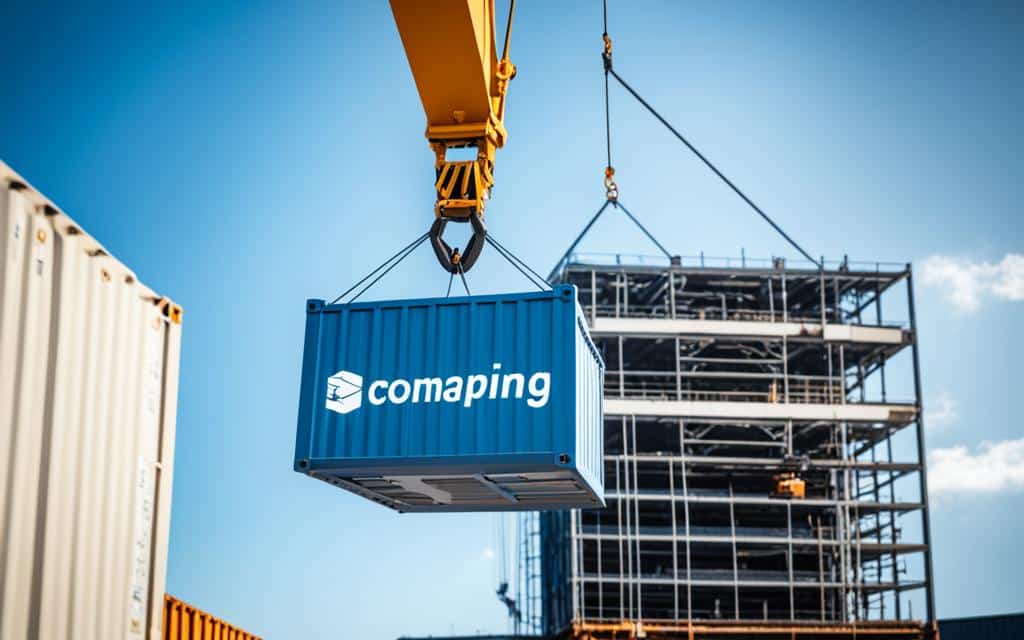Table of Contents
In today’s fast-paced online world, keeping your website and app updated is crucial for staying competitive. Migrating to a new CMS (Content Management System) can be a strategic move to enhance your digital presence. Whether you are looking for improved user experiences or the latest features, a new CMS can provide the solution you need. This article will explore effective CMS migration strategies and offer valuable insights for designers.
Understanding Website Migrations and CMS Migrations
A CMS migration involves moving a website or digital presence from one CMS provider to another. Unlike a website redesign that primarily focuses on aesthetics, CMS migration enhances core functionalities, features, and overall user experiences. Migrations can vary in scale, ranging from full website migrations to partial migrations of specific components or sections.
When undergoing a CMS migration, it is essential to consider the impact on core functionalities and user experiences. A successful migration ensures that critical aspects, such as website speed, navigation, and content management, are seamlessly preserved or improved.
Website Migrations
Website migrations involve transferring the entire website, including its content, database, and functionality, to a new CMS. This process requires careful planning, execution, and verification to ensure a smooth transition without any disruptions to the user experience.
Partial Migrations
Partial migrations are a common approach when specific components or sections of a website need improvement or updates. This strategy enables organizations to enhance specific functionalities while minimizing potential risks associated with a full-scale migration.
During a CMS migration, it’s important to understand the impact on core functionalities that drive the user experience. Elements such as e-commerce capabilities, user registration and login, content management, and search functionality should be prioritized and thoroughly tested throughout the migration process.
To visualize the different types of website migrations and CMS migrations, refer to the table below:
| Type of Migration | Description |
|---|---|
| Full Website Migration | Moving the entire website, including content and functionality, to a new CMS provider. |
| Partial Migration | Transferring specific components or sections of a website to a new CMS for optimization or updates. |
Reasons Why You Might Need to Migrate Your Website to a New CMS
There are several reasons why organizations choose to migrate their websites to a new Content Management System (CMS). These motivations stem from common issues that can negatively impact website performance and user experience. By addressing these issues through CMS migration, organizations can enhance their online presence and achieve optimal results. Let’s explore some of the key reasons that may prompt the need for a website migration.
1. Website Speed
A slow-loading website can significantly affect user engagement and satisfaction. In today’s fast-paced digital landscape, users expect instant access to information. If your current CMS is causing website speed issues, it may be time to consider a migration to a new CMS that prioritizes speed and performance optimization.
2. Server Downtime
Frequent server downtime not only disrupts user experience but can also result in revenue loss for businesses. When your website frequently experiences server downtime, it negatively impacts accessibility and reliability. Migrating to a more reliable CMS can help mitigate server downtime issues and ensure consistent website availability.
3. Traffic Spikes
Handling sudden traffic spikes is crucial, especially for websites experiencing significant growth or running marketing campaigns. If your current CMS struggles to handle surges in traffic, it can lead to poor website performance, crashes, and missed opportunities. Migrating to a scalable CMS that can accommodate traffic spikes will help you maintain a smooth user experience during high-demand periods.
4. Outdated Features
Technological advancements and changing user expectations require websites to stay up-to-date with the latest features and functionalities. If your current CMS lacks essential features or fails to support modern web development practices, it may hinder your ability to deliver a seamless user experience. Migrating to a CMS that offers advanced features and follows best practices will enable you to stay competitive in the digital landscape.
5. Limited Customization Options
Every business has unique branding and design requirements. If your current CMS restricts customization options and limits your ability to create a tailored website that aligns with your brand identity, it may be time for a migration. Migrating to a CMS that offers extensive customization capabilities empowers you to create a visually appealing website that reflects your brand personality.
6. Limited Content Distribution Capabilities
In today’s content-driven world, effectively distributing your website content across various platforms and channels is essential for reaching a wider audience. If your current CMS lacks integrations with social media platforms, email marketing tools, or content syndication options, it can hinder your content distribution efforts. Migrating to a CMS with robust content distribution capabilities can expand your reach and help you connect with your target audience more effectively.
Migrating your website to a new CMS can address these common issues and improve overall website performance. By carefully evaluating your current CMS and identifying areas for improvement, you can make an informed decision that enhances user experience, boosts website speed, and enables you to leverage the latest technological advancements.
Step-by-Step Guide for a Website Migration
Successfully migrating to a new CMS involves following a step-by-step guide. By implementing these key steps, you can ensure a smooth and efficient migration process. Remember to hire a dedicated CMS migration project manager, utilize automated tools, conduct a thorough content audit, develop a migration strategy, and run post-migration tests to ensure data integrity and optimal functionality.
Hiring a Dedicated CMS Migration Project Manager
One of the crucial steps in a successful website migration is hiring a dedicated CMS migration project manager. This individual will be responsible for overseeing the entire migration process, coordinating with stakeholders, and ensuring smooth communication between teams. Their expertise and experience will help address any challenges that may arise during the migration.
Utilizing Automated Tools
Automated tools play a vital role in ensuring an efficient migration process. These tools can help automate data migration, reduce manual errors, and save time. By leveraging automated tools, you can streamline the migration process and ensure a seamless transition of content and data from the old CMS to the new one.
Conducting a Thorough Content Audit
Before migrating to a new CMS, it’s important to conduct a comprehensive content audit. This involves reviewing existing content and identifying what needs to be migrated, what can be archived, and what can be updated or removed. By conducting a thorough content audit, you can ensure that only relevant and valuable content is migrated to the new CMS.
Developing a Migration Strategy
A well-defined migration strategy is crucial for a successful CMS migration. This strategy should outline the timeline, resources, and processes that will be followed during the migration. It should also determine the order in which content will be migrated, ensuring a systematic and organized approach to the migration process.
Running Post-Migration Tests
Post-migration testing is a crucial step to ensure data integrity and optimal functionality of the new CMS. This involves conducting thorough tests to verify that all content is successfully migrated, links are working correctly, and features are functioning as expected. By running comprehensive post-migration tests, you can identify and address any issues or errors that may have occurred during the migration process.
| Key Steps | Description |
|---|---|
| Hire a CMS migration project manager | A dedicated project manager to oversee the migration process |
| Utilize automated tools | Automated tools for efficient migration and reducing manual errors |
| Conduct a content audit | Thoroughly review and audit existing content for migration |
| Develop a migration strategy | Create a well-defined strategy for the migration process |
| Run post-migration tests | Comprehensive testing to ensure data integrity and functionality |
Website Migration Checklist: How to Prepare
Before embarking on the website migration process, it is crucial to be well-prepared. Following this checklist will help ensure a smooth transition.
1. Pre-migration data assessment: Conduct a thorough assessment of your existing website’s data. This includes evaluating the size and complexity of the data that needs to be migrated and identifying any potential challenges or required modifications.
2. Involving stakeholders: Engage all relevant stakeholders throughout the migration process. This includes key decision-makers, developers, designers, content creators, and any other individuals or teams involved in the website’s functioning. Their input and involvement are essential for successful migration.
3. Taking inventory: Take stock of all your website’s content, including text, images, videos, and any other digital assets. This inventory will help you determine what needs to be migrated, updated, or discarded during the transition.
4. Reviewing security regulations: Ensure compliance with the latest security regulations and best practices. Perform a comprehensive review of your current security measures and identify any vulnerabilities that need to be addressed before the migration.
5. Acquiring necessary tools: Identify the tools and resources required for a smooth migration. This may include selecting a suitable CMS platform, acquiring migration plugins, or obtaining technical assistance from experts or consultants.
6. Setting milestones and deadlines: Establish clear milestones and set realistic deadlines for each phase of the migration process. This will help you track progress, stay organized, and ensure that the project stays on schedule.
“The better prepared you are, the more seamless and efficient the migration process will be.”
Migration Checklist: At a Glance
| Tasks | Status |
|---|---|
| Pre-migration data assessment | Not started |
| Stakeholder involvement plan | In progress |
| Content inventory | Completed |
| Security regulations review | Not started |
| Tool acquisition | In progress |
| Milestones and deadlines | Not set |
By diligently following this Website Migration Checklist, you can ensure a successful and efficient transition from your current CMS to the new platform.
Addressing Post-Migration Tasks
Once the migration process is complete, there are several crucial post-migration tasks that need to be addressed to ensure a smooth transition and optimal website performance. These tasks involve testing the completed migration, optimizing data and system for better performance, implementing a data quality control protocol, and ultimately closing down the old CMS system.
Thoroughly Testing the Completed Migration
After migrating to a new CMS, it is essential to thoroughly test all aspects of the website to ensure that everything is functioning correctly. This testing phase helps identify any issues or bugs that may have occurred during the migration process. By conducting comprehensive testing, you can address any performance or functionality issues and provide a seamless user experience.
Optimizing Data and System for Better Performance
During and after a CMS migration, it is important to optimize your data and system to enhance overall website performance. This optimization process involves reviewing and refining the data structure, ensuring efficient database queries, optimizing image sizes and formats, and implementing caching mechanisms to improve page load speed. By optimizing your data and system, you can provide a faster and more responsive website experience for your users.
Implementing a Data Quality Control Protocol
One of the ongoing tasks in the post-migration phase is to implement a data quality control protocol to ensure the ongoing accuracy and integrity of your website’s information. This involves establishing processes and checks to regularly review, validate, and clean up data, ensuring that it remains accurate and up to date. By implementing data quality control measures, you can maintain the reliability and trustworthiness of your website’s content.
Closing Down the Old CMS System
Once the new CMS system is fully functional and all necessary data and functionalities have been migrated successfully, it is essential to close down the old CMS system. This involves shutting down the servers and databases associated with the old system, terminating any subscriptions or licenses, and decommissioning any unused infrastructure. By closing down the old CMS system, you can streamline your operations, reduce costs, and focus entirely on the new CMS and its benefits.
| Post-Migration Tasks | Description |
|---|---|
| Thoroughly testing the completed migration | Conduct comprehensive testing to ensure a smooth transition and optimal website performance |
| Optimizing data and system for better performance | Refine data structure, optimize database queries, optimize images, and implement caching mechanisms |
| Implementing a data quality control protocol | Establish processes and checks to maintain data accuracy and integrity |
| Closing down the old CMS system | Shut down servers and databases, terminate subscriptions/licenses, and decommission unused infrastructure |
Common Website Migration Mistakes And How To Avoid Them
When undergoing a CMS migration, it is essential to be aware of common mistakes and take steps to avoid them. By being proactive and following best practices, you can ensure a smooth and successful migration process.
One crucial aspect is backing up your current site regularly. This acts as a safety net in case anything goes wrong during the migration. Additionally, it is important to consider the domain and the impact a change might have on your SEO efforts. Keeping the domain consistent can help maintain your website’s authority and online presence.
Avoiding content duplication is another key consideration. Duplicate content can harm your search rankings, so it is essential to carefully plan and map out your content migration strategy. Additionally, it is crucial to vet professionals and work with certified partners who have expertise in CMS migration. This ensures that you have the right team in place to handle the technical aspects of the migration process.
Another common mistake is underestimating the time required for a successful migration. It is important to cushion the timeline and allow for unexpected delays. By giving yourself ample time, you can address any issues that may arise and ensure a smooth transition to the new CMS. Lastly, it is crucial to secure the site during the migration process to protect sensitive data and maintain the integrity of your website.
FAQ
What is a CMS migration?
A CMS migration involves moving a website or digital presence from one CMS provider to another. It focuses on enhancing core functionalities, features, and overall user experiences.
Why would an organization choose to migrate their website to a new CMS?
Common reasons for website migration include issues with website speed, high server downtime, inability to handle traffic spikes, outdated features, limited customization options, and limited content distribution capabilities. Migrating to a new CMS can address these issues and improve overall website performance.
What are the key steps involved in a successful CMS migration?
The key steps in a successful CMS migration include hiring a dedicated CMS migration project manager, utilizing automated tools for efficient migration, conducting a thorough content audit, developing a migration strategy, and running post-migration tests to ensure data integrity and optimal functionality.
How can I prepare for a website migration?
To prepare for a website migration, it’s important to conduct a pre-migration data assessment, involve all necessary stakeholders, take inventory of content and data, review security regulations, acquire the necessary tools, and set milestones and deadlines for a smooth migration.
What post-migration tasks should I address?
After the migration is complete, it’s important to thoroughly test the completed migration, optimize data and system for better performance, implement a data quality control protocol, and eventually close down the old CMS system once the new system is fully functional.
What are common mistakes to avoid during a website migration?
Common mistakes to avoid include regularly backing up the current site, considering the importance of keeping the domain, avoiding content duplication, vetting professionals and using certified partners, cushioning the timeline to allow for unexpected delays, and ensuring the security of the new site during the migration process.













